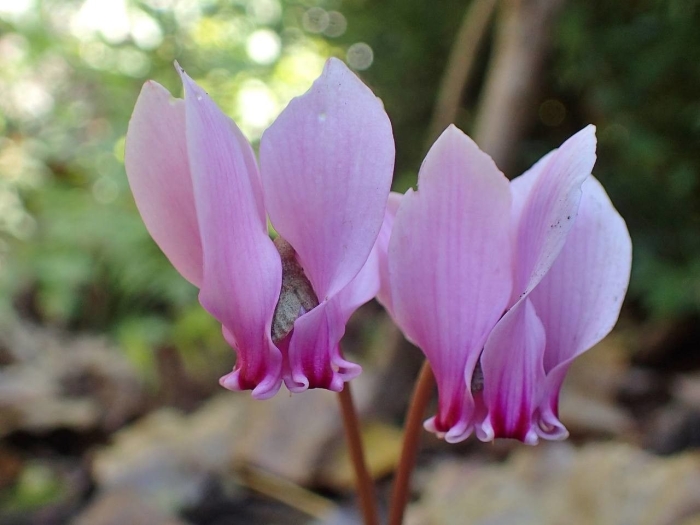Ivy-Leaf Cyclamen
(Cyclamen hederifolium)
Ivy-Leaf Cyclamen (Cyclamen hederifolium)
/
/

Yoan MARTIN
CC BY-SA 4.0
























































Estimated Native Range
Summary
Ivy-Leaf Cyclamen is valued for its charming flowers and decorative foliage, which can provide ground cover in shaded garden areas. It has received the Royal Horticultural Society’s Award of Garden Merit, indicating its excellence for garden use. Suitable for naturalizing in woodland gardens, rockeries, and alpine gardens, it thrives under deciduous trees and shrubs, where it can form extensive colonies. It prefers part shade, requiring low to medium water and well-drained soil. While it is hardy to zone 5a, snow cover can enhance its winter survival. Gardeners should be aware that in oceanic climates, it can self-seed prolifically and may outcompete less vigorous species such as Cyclamen coum.CC BY-SA 4.0
Plant Description
- Plant Type: Herb
- Height: 0.3-0.5 feet
- Width: 0.5-1 feet
- Growth Rate: Moderate
- Flower Color: Pink, Purple, White
- Flowering Season: Fall
- Leaf Retention: Deciduous
Growth Requirements
- Sun: Part Shade
- Water: Low, Medium
- Drainage: Slow, Medium
Common Uses
Bank Stabilization, Bee Garden, Deer Resistant, Drought Tolerant, Fragrant, Groundcover, Low Maintenance, Rock Garden, Showy Flowers, Street Planting
Natural Habitat
Woodland areas, rocky hillsides, and scrub in the Mediterranean region
Other Names
Common Names: Sowbread, Persian Violet, Hardy Cyclamen, Ivy-Leaved Cyclamen, Efeublatt-Alpenveilchen, Herbst-A., Herbst-Alpenveilchen, Neapolitanisches Alpenveilchen, Cyclamen De Naples, Cyclamen À Feuilles De Lierre
Scientific Names: , Cyclamen hederifolium, Cyclamen neapolitanum var. album, Cyclamen vernum, Cyclamen aedirhizum, Cyclamen angulare, Cyclamen ficariifolium, Cyclamen insulare, Cyclamen linariifolium, Cyclamen oedirrhizum
GBIF Accepted Name: Cyclamen hederifolium Aiton